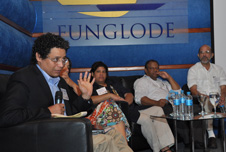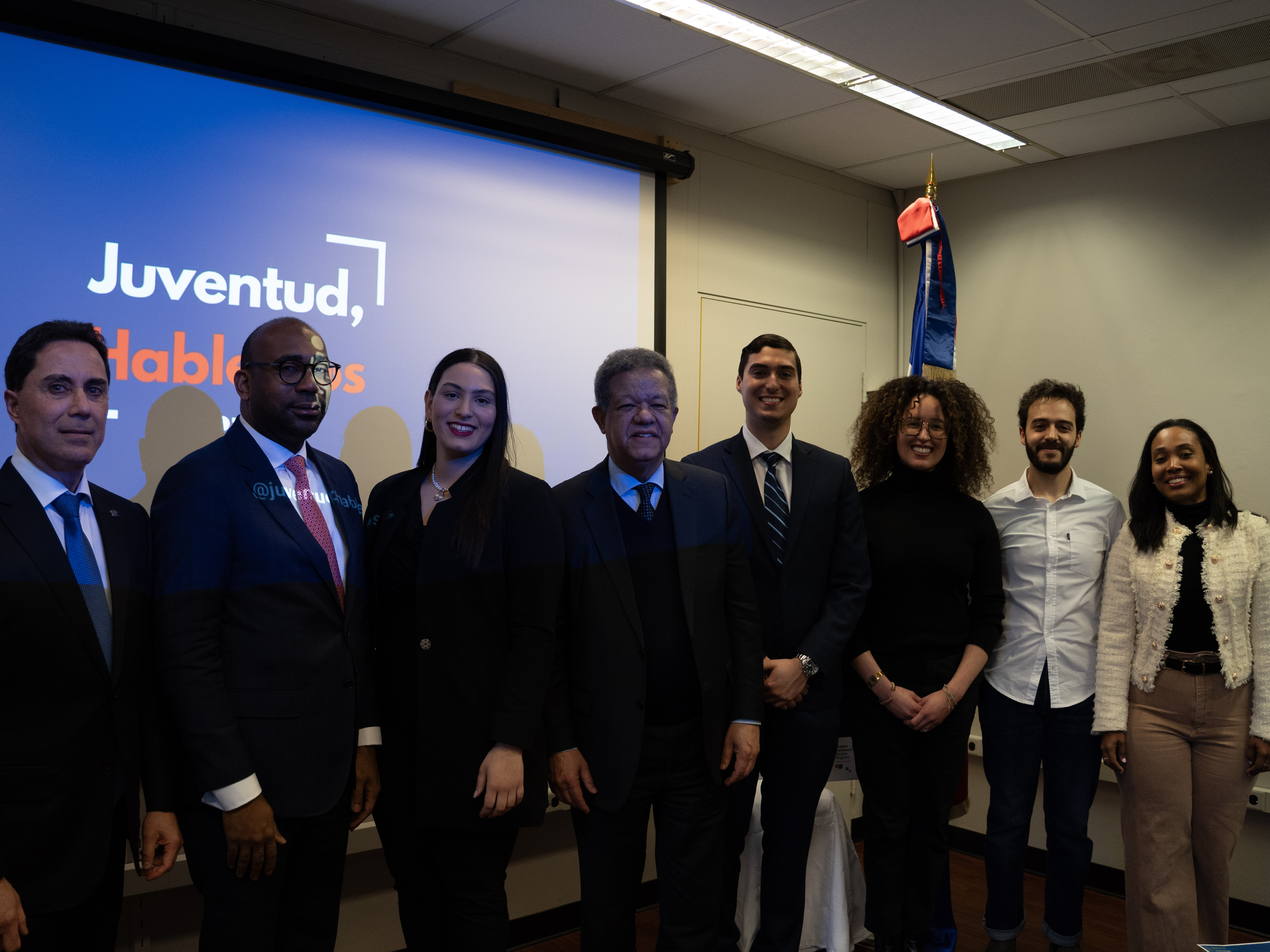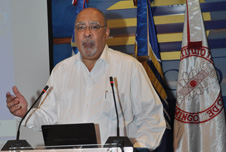Participants in High Level Dialogue: “The Growth of Lake Enriquillo: Environmental, Social and Scientific Implications” Affirm that Relocation of Families Affected by the Rise of Lake Enriquillo is a Priority
 | Participants in High Level Dialogue: “The Growth of Lake Enriquillo: Environmental, Social and Scientific Implications” Affirm that Relocation of Families Affected by the Rise of Lake Enriquillo is a Priority On Saturday, July 28, Global Foundation for Democracy and Development (GFDD), and its sister institution in the Dominican Republic, Fundación Global Democracia y Desarrollo (FUNGLODE), partnered with the City College of New York (CCNY) and the Instituto Tecnológico de Santo Domingo (INTEC) to organize the high level dialogue “The Rise of Lake Enriquillo: Environmental, Social and Scientific Implications,” from 9:00 am to 5:30 pm at FUNGLODE Headquarters in Santo Domingo. “The Ministry of Agriculture identified 3,332 hectaresto be devoted for the relocation of agricultural workers and families affected by the rise of Lake Enriquillo. The solution is to not remove or impede that water enter the lake. The solution is relocate the people residing in affected areas,” 53 representatives from public, private and non-governmental institutions participated in the high-level dialogue which aimed at devising strategies to address the environmental and social implications of the rise of Lake Enriquillo. “The Ministry of Agriculture identified 3,332 hectaresto be devoted for the relocation of agricultural workers and families affected by the rise of Lake Enriquillo. The solution is to not remove or impede that water enter the lake. The solution is relocate the people residing in affected areas,” stated the agricultural engineer and specialist in natural resource management, José Alarcón. Alarcón, representing Universidad Autónoma de Santo Domingo (UASD), delivered the presentation “The Impact of the Flooding Phenomenon of Lake Enriquillo in the Agrofishery Sector.” The expert confirmed that the strategy to confront the effects of the rise of Lake Enriquillo should focus on territorial reorganization, the relocation of communities located in vulnerable zones and increased support for initiatives aimed at improving risk management. “We need to raise awareness among inhabitants about the vulnerable zones so that they know where they are located and that they know how to respond to the natural phenomena that could occur,” he stressed. He also added that conditions of poverty have also led to the establishment of illegal squatter settlements in the areas surrounding the lake.
She explained that, as of 2009, 55 percent of the population living in the province of Independencia had not completed primary education and that 26.8 percent of the population was unemployed. Meanwhile, in the province of Bahoruco, 51 percent of the inhabitants had not completed primary education and 34.8 percent of the population was unemployed. Shee added that the data provided by the National Office of Statistics (ONE) and the United Nations Development Programme (UNDP) affirmed that 70.2 percent of the households in these zones are considered to be poor, reporting low levels of income. Bonilla stated that as a consequence of the flooding, 90 percent of families lost plots of land where they had planted their crops and raised their cattle. This data is revealed in the 2011 study realized by the Project in Support of the Competitive Agri-food Transition (Proyecto de Apoyo a la Transición Competitiva Agroalimentaria (PACTA). “This significantly affects the economy and security of families and the levels of malnutrition typical of the zone, as families had previously been reliant on sustainable agriculture to meet nutritional needs and had sold excess goods to subsist,” posited Bonilla.  During the high-level dialogue, representatives from The City College of New York (CCNY) and the Instituto Tecnológico de Santo Domingo (INTEC) reported that they installed amonitoring system to detect climatic and atmospheric variability. The monitoring system is comprised of 26 points distributed throughout 18 neighborhoods located in close proximity to Lake Enriquillo. The monitoring system has been financed by the National Fund for Innovation and Scientific and Technological Development (Fondo Nacional de Innovación y Desarrollo Cientifico Tecnologico (FONDOCyT) of the Ministry of Higher Education, of Science and Technology, CCNY and INTEC. The monitoring system will complement other climate monitoring devices being utilized in these zones. This new system is able to detect additional indicators. The event also featured the participation of Yolanda León, Faculty of Science, INTEC; Jorge E. González, Grove School of Engineering, CCNY; Ricardo González, Professor of Engineering INTEC; and Luis Cuevas, Operation of Risk Systems, INDRHI. The conference was comprised of the following panel discussions:
The high level dialogue also featured the participation of Lisa Staiano-Coico , President of The City College of New York (CCNY) and Rolando M. Guzmán, President of Instituto Tecnológico de Santo Domingo (INTEC). Presentations: Related links:         | |

Related News
-

(Versión en español) MINC realiza el evento "Enamórate del Arte y la Cultura" en Los Alcarrizos
-

(Versión en español) InspireDR celebra una década de impacto con “La Fiesta 10” en Cabarete
-

(Versión en español) Organización “Juventud Hablemos” de la Universidad de Columbia y la GFDD copatrocinan a casa llena evento sobre “La evolución de la democracia en la República Dominicana”
-

(Versión en español) Realizan premiere del documental “El Padrino II: 50 años y su filmación en República Dominicana”
-

Actividad #1
Dónde:: Complejo Acuático Del Centro Olímpico Juan Pablo Duarte.
Días: 28 y 29 de noviembre 2016.
Precios: RD$1,1000.00 VIP, RD$600.00 gradas.

 Solhanlle Bonilla, environmental economist and environmental management specialist, conveyed the need to relocate families that live in the provinces of Independencia and Bahoruco, the provinces nearest to the lake, due to the conditions associated with the water level rise.
Solhanlle Bonilla, environmental economist and environmental management specialist, conveyed the need to relocate families that live in the provinces of Independencia and Bahoruco, the provinces nearest to the lake, due to the conditions associated with the water level rise.